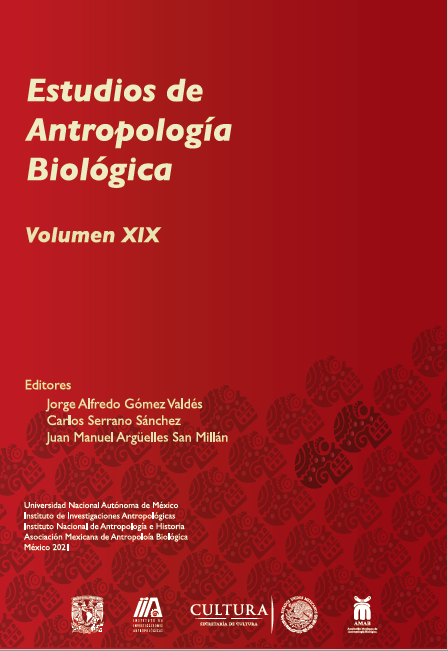56 / 5,000 Translation results The engraved jaw of the sacred precinct of Tenochtitlan
DOI:
https://doi.org/10.22201/iia.14055066p.2021.66373Keywords:
mandible, Tenochtitlan, taphonomy, MEB, Mixcóatl y xiuhcóatlAbstract
According to different ethnohistorical sources of the sixteenth century, the sacred precinct of Tenochtitlan was the most fervent manifestation of the Mexica religion, a fact that can be corroborated through its architecture, its materials and hieraticimages. Friar Bernardino de Sahagún and his Nahua collaborators, suggested that this place was occupied by 78 buildings, among which was the Calmécac, center of religious education for the children of the nobility. Thanks to the explorations of the Urban Archaeology Program, this building was found during the excavations of the Donceles No. 97 site of the Historic Center of Mexico City, where numerous materials of great archaeological relevance were also recovered. In this article we analyze a fragmentary carved mandible –found in this same context– through taphonomic, technological, iconographic and biological profile analyses to decipher part of the operative chain of this object, as well as its symbolism.
Downloads
Published
How to Cite
Issue
Section
License

http://creativecommons.org/licenses/by-nc-nd/4.0/

